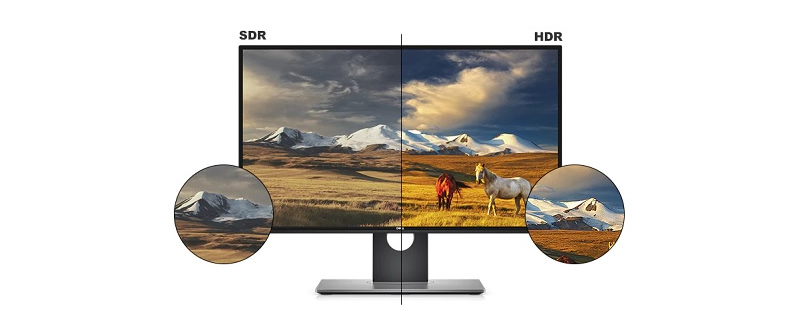
A good monitor can take your daily productivity, gaming fun or creative work to the next level. But where do you start when choosing? In this best monitors guide, we explain what to look for when buying a screen. Whether you’re setting up a home office, looking for a gaming monitor or want an all-rounder for multitasking.
Let me help you make the right decision.

Screen Size and Resolution: How Much Space Do You Need?
Monitors come in a variety of sizes, from compact 22-inch screens to gigantic ultrawide 49-inch displays. Resolution is just as important. The higher the resolution, the sharper the image. The most common resolutions are:
- Full HD (1920×1080) – Good for basic work and casual gaming, but less sharp on larger screen sizes.
- Quad HD (2560×1440) – Popular among gamers and professionals, offers sharp images without the high system requirements of 4K.
- 4K Ultra HD (3840×2160) – Ideal for high-end content creation and professional work, but requires a powerful computer for smooth performance.
- Ultrawide and Super Ultrawide (3440×1440 or 5120×1440) – Great for multitasking and gaming, as you can open multiple windows side by side without the need for a second screen.
Refresh Rate and Response Time: The Speed of Your Image
For gamers and fast workflows, the refresh rate is a crucial factor. It determines how often the image is refreshed per second.
- 60Hz – Standard for most work monitors and casual use.
- 120Hz – 144Hz – Suitable for gamers who want smoother motion without stuttering.
- 240Hz and above – For competitive eSports gamers who demand the lowest input lag and the smoothest gameplay.
In addition, response time is important, especially for gamers. A low response time (for example 1ms) prevents motion blur and ghosting effects in fast-paced games.
Got some money to spare after setting up your perfect monitor setup?
Why not put it to work for you? Check out our beginner-friendly guide:
Investing Made Easy for Beginners – Learn how to start with just a small budget and limited knowledge!
Panel Type: IPS, TN, or VA
Panel type affects a monitor’s color reproduction, viewing angles, and response time.
- IPS (In-Plane Switching) – Provides the best color and wide viewing angles, perfect for graphic designers and content creators.
- TN (Twisted Nematic) – Offers the fastest response times, but with poorer color reproduction and viewing angles. Often chosen by eSports gamers.
- VA (Vertical Alignment) – Has better contrast than TN and IPS, but can exhibit slight ghosting. Ideal for mixed-use scenarios such as work and gaming.

HDR and Color Rendering: How Important is Image Quality?
HDR (High Dynamic Range) improves the brightness and contrast of an image, making games and videos look more realistic. Good HDR monitors often support:
- HDR10 – Basic HDR standard for better color reproduction.
- DisplayHDR 400/600/1000 – The higher the number, the better the brightness and contrast ratios.
For professionals in photo editing and video production, a monitor with a wide color accuracy (sRGB, AdobeRGB, DCI-P3) is a must.
Connections and Extra Features
Depending on your setup, the following ports are important:
- HDMI & DisplayPort – For video connections, with DisplayPort often supporting higher refresh rates.
- USB-C – Useful for laptops that transmit power and video signal with a single cable.
- G-Sync & FreeSync – Technologies from NVIDIA and AMD to reduce tearing in games.
G-Sync & FreeSync: Smooth, stutter-free images
If you’re a gamer — or just like smooth, stutter-free images — then G-Sync (from NVIDIA) and FreeSync (from AMD) are technologies to look out for when choosing a monitor.
Both technologies were developed to solve a common problem: screen tearing. This is the phenomenon where the image “tears” or is out of sync with what your video card is delivering. This mainly occurs during fast movements, such as in games or videos.
G-Sync and FreeSync ensure that the refresh rate of your monitor moves with the output of your video card, resulting in smoother images. The result? Less stuttering, no tearing, and a much better visual experience.
G-Sync only works with NVIDIA video cards and usually requires approved (often slightly more expensive) monitors.
FreeSync is AMD’s counterpart and is more widely supported by affordable monitors. Many modern NVIDIA cards now also support FreeSync via a feature called G-Sync Compatible.
For those who play a lot of games, edit videos or simply value smooth and stable image quality, these technologies are definitely worth considering.
Which Monitor Is Right for Your Use?
- Work and Productivity: Choose a large screen (27″ or larger) with a high resolution (QHD or 4K) and IPS panel for the best color reproduction and wide viewing angles.
- Gaming: Look for a high refresh rate (144Hz or higher), low response time (1ms), and support for G-Sync or FreeSync.
- Creative Professionals: A monitor with high color accuracy, HDR support, and at least a 4K resolution is recommended.
Conclusion
The choice of a monitor depends largely on your use. A good balance between resolution, refresh rate, and color reproduction ensures that you get the best performance from your work, gaming, or entertainment. Hopefully, this guide will help you find the perfect monitor for your needs!
Want more tips on tech and gadgets? Keep an eye on our blog for the latest trends and reviews!



